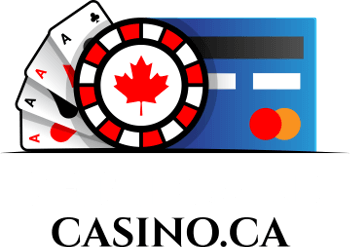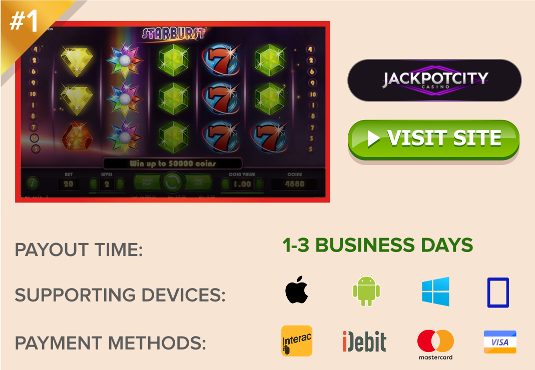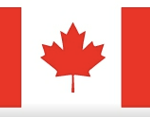Down Under 21 Rules and Tips
How to play Down Under Blackjack, an intriguing 21 game that hints at what card the dealer has ‘down under’.
 Down Under Blackjack is not a game that was devised by some famous Aussie gambling guru. There are no kangaroo bonuses. Despite its natural connotations, the use of the phrase ‘Down Under’ has nothing to do with Australia, and everything to do with figuring out the dealer’s hole card – i.e. the one ‘down under’ his face-up card.
Down Under Blackjack is not a game that was devised by some famous Aussie gambling guru. There are no kangaroo bonuses. Despite its natural connotations, the use of the phrase ‘Down Under’ has nothing to do with Australia, and everything to do with figuring out the dealer’s hole card – i.e. the one ‘down under’ his face-up card.
Invented by Kyle Morris and produced by 4-D Gaming, Down Under Blackjack is as intriguing variation of 21. The moment a hand is fully dealt, player’s are given a clue as to what that card may be – small, middle, or large. This information completely restructures the strategic foundation for players. And while the rules are altered to ensure the casino gets its ever-present advantage, with the right rules, the RTP is about as favorable as you’ll get, featuring an expected return of 99.81% with basic strategy applied.
How to Play Down Under Blackjack
In most ways, Down Under 21 is no different from standard blackjack rules. The major differences include – for starters – an approximate revelation into the down under card – followed by one nasty little adjustment. If the dealer ends with a hand of 22, it will push against most player hands. Let me elaborate…
Down Under Clue: Once all hands are dealt, the dealer will peek at his or her hole card, then give a clue as to what it is. The clue will either be Small, Medium or Large. The dealer will not speak the clue, but rather slide his/her hand into a color coordinated box on the table felt. The color will denote the size.
- BLUE = Small card 2, 3, 4 or 5
- RED = Medium card of 6, 7, 8 or 9
- GOLD = Large Card of 10, J, Q, K or Ace
Dealer 22 Push: If the player’s hand is still active (did not bust), and the dealer ends with a total of 22, it will not be a bust for the house. Instead, the dealer’s hand will push (tie) against most player hands. The only hands that the player can win at this point are:
- Blackjack
- Any total of 21
- A total of 20 consisting of two 10-point cards
Casinos have been known to host this game with two pay tables, either paying 3:2 or 6:5 for blackjack. If the payout is 3:2, the house edge is just 0.19%, making Down Under one of the best blackjack games for strategic players. If, however, the payout is 6:5 for blackjacdk, the edge jumps to 1.92%, making it one of the worst 21 games in the casino.
The complete rules of Down Under Blackjack are as follows:
Specific Rules of Play
- Decks: 6
- Soft 17: Dealer Hits
- Doubling: Yes, on Hard 9, 10 or 11 only
- Splitting: Yes, up to 3x
- Double after Split: Yes
- Resplit Aces: No
- Draw to Split Aces: No
- Surrender: No
- Dealer Checks for Blackjack: Yes
- 22 Push: Dealer 22 pushes against all but blackjack, 21 or pair of 10s
- Blackjack Pays: 3 to 2 (edge 0.19%), or 6 to 5 (edge 1.92%)
Match the Dealer Side Bet
In addition to the base game, players have the option of making a Match the Dealer side bet. This is a very simple bet, where payouts are based entirely on whether one or both of the player’s cards match the dealer’s up-card. If it does, the player wins. If the cards match by rank and suit, the payout is higher. It is possible for both of the player’s cards to match, in which case both will trigger a payout.
| Player’s Card(s) Match Dealer’s Up-Card | Pays |
| Two Suited Matches | 22:1 |
| One Suited, One Non-Suited Match | 15:1 |
| One Suited Match | 11:1 |
| One Non-Suited Match | 4:1 |
| House Edge = 4.06% |
Down Under 21 Strategy
Having some insight as to what the dealer’s hole card is changes everything in terms of applying basic strategy to this game. It’s like walking the tight-rope halfway between standard blackjack, and Double Exposure Blackjack. Instead of knowing exactly what you’re up against, you get a close approximation.
Knowing the dealer has a 10 or Ace underneath can be extremely valuable, the same as knowing if the dealer’s hole card is small (2-5) can make it easier to judge the value of your own hand. With this extended knowledge in mind, the following strategy charts will help guide you to the best possible RTP of 99.81% (assuming blackjack pays 3:2).
The specific strategy for each hand is based entirely on whether the dealer’s hole card is Small, Medium or Large. Thus, to use these charts, start by scrolling to the section that corresponds the Dealer’s Hole Card.
Down Under Strategy vs. Small Hole Card (2-5)
Below are three charts. The first chart is designated for a player’s Hard Hand total (no 11-point Ace), the second for a player’s Soft Hand total (with 11-point Ace), and the third for a player’s Paired Hand (capable of being split). Please refer to the correct chart for your current hand, then follow the directive provided.
| Hard Total | Correction action based on Dealer’s Up-Card |
| 4-8 | Hit |
| 9 | Double against 10, otherwise Hit |
| 10 | Hit against 5-8, otherwise Double |
| 11 | Hit against 6, otherwise Double |
| 12-13 | Stand against 9-10, otherwise Hit |
| 14 | Hit against 3-7, otherwise Double |
| 15 | Hit against 4-7, otherwise Double |
| 16 | Hit against 4-6, otherwise Double |
| 17-21 | Stand |
| Soft Total | Correction action based on Dealer’s Up-Card |
| 13-17 | Double against 10, otherwise Hit |
| 18 | Double against 10, Hit against 6-7 or A, otherwise Stand |
| 19 | Double against 10, otherwise Stand |
| 20-21 | Stand |
| Pairs | Correction action based on Dealer’s Up-Card |
| 2-2 | Split against 2-3 or 10, otherwise Hit |
| 3-3 | Split against 10, otherwise Hit |
| 4-4 | Split against 10, otherwise Hit |
| 5-5 | Hit against 5-8, otherwise Double |
| 6-6 | Split against 9-10, otherwise Hit |
| 7-7 | Hit against 5-7, Stand against 8 or A, otherwise Split |
| 8-8 | Stand against 7, otherwise Split |
| 9-9 | Split against 2-4 or 9-10, otherwise Stand |
| 10-10 | Stand |
| A-A | Split |
Down Under Strategy vs Medium Hole Card (6-9)
Below are three charts. The first chart is designated for a player’s Hard Hand total (no 11-point Ace), the second for a player’s Soft Hand total (with 11-point Ace), and the third for a player’s Paired Hand (capable of being split). Please refer to the correct chart for your current hand, then follow the directive provided.
| Hard Total | Correction action based on Dealer’s Up-Card |
| 4-6 | Hit |
| 7 | Double against 7, otherwise Hit |
| 8 | Double against 7-8, otherwise Hit |
| 9 | Double against 6-9, otherwise Hit |
| 10 | Double against 5-9, otherwise Hit |
| 11 | Double against 3-9, otherwise Hit |
| 12 | Stand against 5-7, otherwise Hit |
| 13 | Stand against 5-8, otherwise Hit |
| 14-15 | Stand against 4-8, otherwise Hit |
| 16 | Stand against 3-8, otherwise Hit |
| 17 | Stand against 2-10, otherwise Hit |
| 18-21 | Stand |
| Soft Total | Correction action based on Dealer’s Up-Card |
| 13-17 | Double against 6-8, otherwise Hit |
| 18 | Double against 6-8, Hit on 2-3 or A, otherwise Stand |
| 19 | Double against 6-7, otherwise Stand |
| 20 | Double against 7, otherwise Stand |
| 21 | Stand |
| Pairs | Correction action based on Dealer’s Up-Card |
| 2-2 | Split against 6-9, otherwise Hit |
| 3-3 | Split against 6-9, otherwise Hit |
| 4-4 | Split against 6-7, Double against 8, otherwise Hit |
| 5-5 | Double against 5-9, otherwise Hit |
| 6-6 | Split against 5-9, otherwise Hit |
| 7-7 | Split against 5-9, Stand against 4, otherwise Hit |
| 8-8 | Stand against 3, Hit against A, otherwise Split |
| 9-9 | Stand against 2-4, otherwise Split |
| 10-10 | Split against 7, otherwise Stand |
| A-A | Hit against Ace, otherwise Split |
Down Under Strategy vs Large Hole Card (10-A)
Below are three charts. The first chart is designated for a player’s Hard Hand total (no 11-point Ace), the second for a player’s Soft Hand total (with 11-point Ace), and the third for a player’s Paired Hand (capable of being split). To play Down Under Blackjack with the highest theoretical return, please refer to the correct chart for your current hand, then follow the directive provided.
| Hard Total | Correction action based on Dealer’s Up-Card |
| 4-7 | Hit |
| 8 | Double against 4-6, otherwise Hit |
| 9 | Double against 3-6, otherwise Hit |
| 10-11 | Double against 2-6, otherwise Hit |
| 12 | Stand against 3-6, otherwise Hit |
| 13-16 | Stand against 2-6, otherwise Hit |
| 17 | Hit against 8-10, otherwise Stand |
| 18 | Hit against 9-10, otherwise Stand |
| 19 | Hit against 10, otherwise Stand |
| 20-21 | Stand |
| Soft Total | Correction action based on Dealer’s Up-Card |
| 13-17 | Double against 3-6, otherwise Hit |
| 18 | Double against 3-6, Hit against 8-A, otherwise Stand |
| 19 | Double against 3-6, Hit against 10, otherwise Stand |
| 20 | Double against 5-6, otherwise Stand |
| 21 | Stand |
| Pairs | Correction action based on Dealer’s Up-Card |
| 2-2 | Split against 3-7, otherwise Hit |
| 3-3 | Split against 3-7, otherwise Hit |
| 4-4 | Split against 3-6, otherwise Hit |
| 5-5 | Double against 2-6, otherwise Hit |
| 6-6 | Split against 3-7, otherwise Hit |
| 7-7 | Stand against 2, Split against 3-7, otherwise Hit |
| 8-8 | Split against 2-8, otherwise Hit |
| 9-9 | Split against 3-6 or 8-9, Hit against 10, otherwise Stand |
| 10-10 | Split against 6, otherwise Stand |
| A-A | Hit against 7-10, otherwise Split |
 Jackpotcity.com is our editorial pick for your gaming needs. Currently offering an entire suite of casino games, as well as a wide range of Canadian deposit options, JackPotCity truly offers world-class gaming.
Jackpotcity.com is our editorial pick for your gaming needs. Currently offering an entire suite of casino games, as well as a wide range of Canadian deposit options, JackPotCity truly offers world-class gaming.





